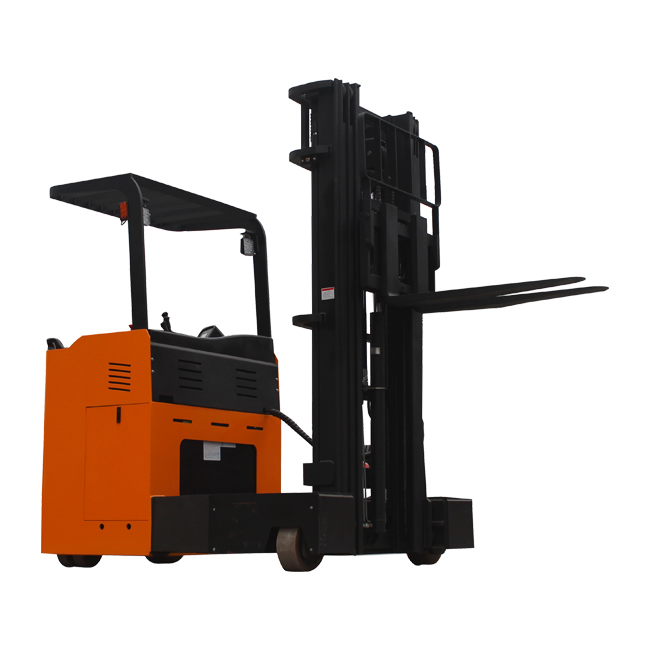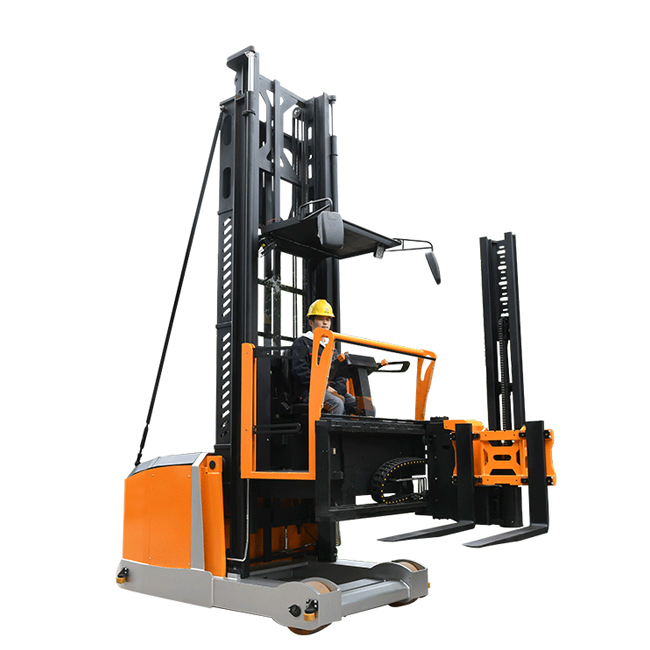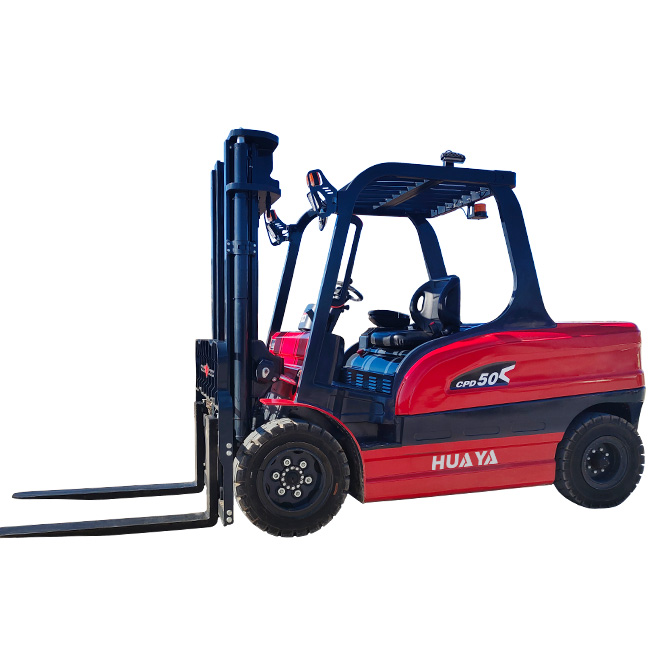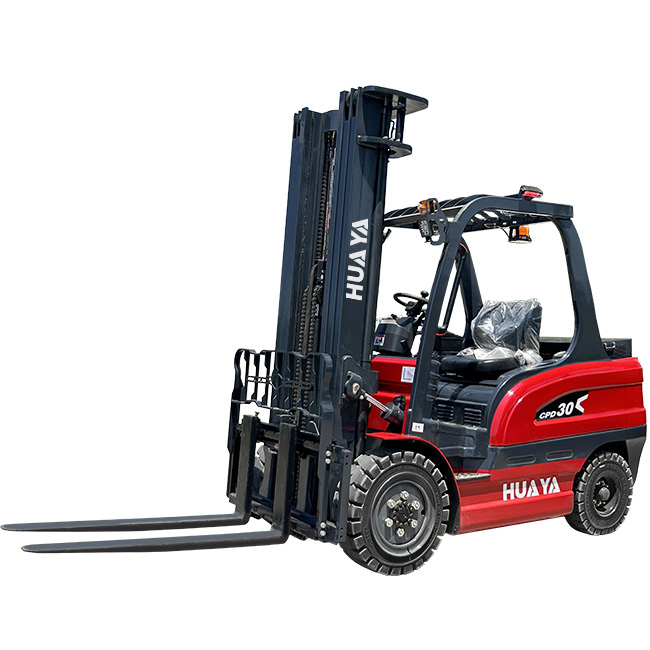Is a Stand-Up Forklift a Reach Truck?
22 Aug 2025
If you’ve ever walked into a busy warehouse, you’ve likely seen forklifts zipping around with pallets stacked high. But here’s where things get confusing: Is a stand-up forklift the same as a reach truck? Many people use the terms interchangeably, but they aren’t the same. Let’s clear the air.
The Basics of Stand-Up Forklifts

A stand-up forklift, also known as a stand-on forklift, is a counterbalance forklift designed for narrow aisles and high-mobility tasks. Operators stand inside the enclosed compartment, which allows them to quickly step in and out during frequent loading and unloading.
Features of Stand-Up Forklifts:
The operator stands instead of sitting.
Compact design suitable for tight warehouse spaces.
Counterbalance structure (the weight of the forklift balances the lifted load).
Designed for quick maneuvering and short travel distances.
Stand-up forklifts are widely used in retail warehouses, logistics hubs, and production facilities where operators need to perform high-frequency tasks efficiently.
What Is a Reach Truck?

A reach truck is a specialized type of forklift designed specifically for high stacking and deep rack storage. Unlike stand-up counterbalance forklifts, a reach truck has outward-extending forks that “reach” into storage racks.
Features of Reach Trucks:
Forks can extend forward to pick loads from deep racks.
The operator usually stands sideways inside the cabin.
Designed for tall racking systems.
Excellent for maximizing vertical warehouse space.
Reach trucks are commonly used in large distribution centers and warehouses with high-density storage systems.
The Main Difference Between Stand-Up Forklifts and Reach Trucks
The primary difference is that stand-up forklifts are counterbalance trucks, while reach trucks are designed for extended reach in racking systems.
Stand-up forklift – General-purpose, maneuverable, good for loading/unloading.
Reach truck – Specialized for high racking, storage optimization.
Think of a stand-up forklift as a versatile all-rounder, while a reach truck is a specialist for vertical storage.
Design Comparison: Stand-Up vs. Reach
When you look at both machines side by side, their design differences become clear.
Stand-Up Forklift: Compact chassis, counterbalance weight at the back, wide base for stability.
Reach Truck: Slimmer design with stabilizing legs in front, extending mast, and forks that slide forward.
This makes the reach truck ideal for narrow aisles with tall racks, while the stand-up forklift is more suited for mixed-use environments.
Operator Position and Comfort
Both forklifts require the operator to stand, but the experience differs:
Stand-Up Forklift: Operator faces forward, providing excellent visibility when moving loads in open spaces.
Reach Truck: The Operator usually stands sideways, making it easier to see racks and shelves while stacking loads vertically.
For operators working long shifts, ergonomics and comfort become critical factors in choosing between the two.
Performance and Maneuverability
Stand-Up Forklift: Excels in short travel distances and quick direction changes. It is perfect for loading/unloading trucks, moving pallets, and working in congested areas.
Reach Truck: Excels in precision lifting and high stacking. It may not move as quickly in open areas, but it is unmatched in storage efficiency.
In summary: stand-up = fast and versatile, reach truck = precise and space-saving.
Applications in Different Industries
Stand-Up Forklifts Are Best For:
Retail stores
Food & beverage warehouses
Manufacturing facilities
Logistics centers with frequent truck loading/unloading
Reach Trucks Are Best For:
Large distribution warehouses
Cold storage facilities
High-density storage environments
Industries requiring maximum use of vertical space
Advantages of Stand-Up Forklifts
High maneuverability in tight aisles.
Faster entry and exit for operators.
Good visibility for forward travel.
Versatile in handling different pallet types.
Requires less operator training than specialized trucks.
Advantages of Reach Trucks
Maximum storage capacity in limited floor space.
Ability to lift loads to 40 feet high.
Excellent for deep racking and narrow aisles.
Improves warehouse efficiency by stacking pallets vertically.
Limitations of Each
Stand-Up Forklift Limitations:
Not ideal for extremely high racks.
Less efficient in deep racking systems.
Reach Truck Limitations:
Cannot handle outdoor or uneven terrain.
Limited capacity compared to large counterbalance forklifts.
Requires highly skilled operators.
Safety Considerations
Both machines come with specific safety requirements:
Stand-Up Forklift: Watch for tip-over risks when carrying heavy loads.
Reach Truck: Extra caution is required when lifting high loads to prevent falling pallets.
Operator training, regular inspections, and proper maintenance are essential for safe operations.
Cost and Investment Considerations
Stand-Up Forklift: Usually more affordable and versatile, making it a good choice for small to medium-sized warehouses.
Reach Truck: Higher investment, but delivers long-term storage efficiency in large-scale facilities.
Companies often invest in both types depending on operational needs.
How to Choose the Right Forklift for Your Warehouse
When deciding whether to buy a stand-up forklift or a reach truck, consider:
Warehouse layout (narrow aisles or open floor).
Storage height requirements.
Frequency of truck loading/unloading.
Operator skill levels.
Budget and maintenance costs.
A detailed assessment of these factors ensures you invest in the right forklift for maximum efficiency.
Future Trends in Forklift Technology
Both stand-up forklifts and reach trucks are evolving with new technologies, including:
Electric powertrains for eco-friendly operations.
Automation and robotics for unmanned warehouse solutions.
Telematics and IoT for fleet management.
Lithium-ion batteries for faster charging and longer run times.
These innovations are making forklifts safer, smarter, and more cost-efficient.
So, is a stand-up forklift a reach truck? The answer is no. While they may look similar at first glance, their design, function, and applications are very different.
A stand-up forklift is a versatile, maneuverable counterbalance truck, perfect for quick loading, unloading, and general warehouse operations.
A reach truck is a specialized machine built for high stacking and maximizing storage capacity.
Choosing between the two depends on your warehouse layout, storage needs, and operational goals. In many cases, businesses invest in both types to balance flexibility with storage efficiency.
By understanding the differences between stand-up forklifts and reach trucks, you can make a smarter decision that boosts productivity, reduces costs, and ensures safe operations in your facility.



